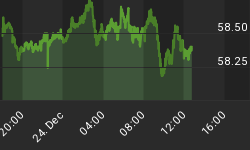Yesterday, I made a prediction that should scare a lot of investors.
I predicted a massive loss in market valuation for some of North America's largestenergy producers. You might own some of these names yourself.
I'll share some specific names with you in a moment... But before we cover them, it's important you know the dynamics that will drive them lower.
I covered the first dynamic yesterday. It's called "reserve write-downs."
As you probably know, the price of natural gas has collapsed more than 60% over the past 12 months. Energy firms that carry billions of dollars of reserves on their books based on the "old" prices (around $4 per MMBtu) will have to "write-down" the value of those reserves to reflect the new prices (below $2 per MMBtu).
Natural gas reserves that were "economically recoverable" - and thus, extremely valuable - when natural gas traded for more than $4 per MMBtu back in 2010 are going to be worth much, much less... now that natural gas is below $2 perMMBtu.
The second dynamic involves "hedging."
Hedging is when one party agrees to sell a commodity to another party at a particular price in the future. This strategy helps commodity producers and consumers know in advance what their price of a given commodity will be. It gives both parties a greater ability to plan for the future.
For example, a farmer might agree to sell his corn for $6 per bushel before he even harvests it. Or an oil producer might agree to sell his production for $100 per barrel. This gives the farmer and the oilman the certainty they need to run their budgets. Even if the prices of their given commodities fall, both the farmer and the oilman are protected from price declines. They've "hedged" their production.
Hedged natural gas contracts have protected many producers from the full wrath of today's rock-bottom prices. They've been able to sell their production at relatively high prices... even while the spot price collapsed.
But... for a lot of producers, these higher-priced hedges are aboutto expire.
Encana, Canada's largest natural gas company, is a good example. The company had prudently hedged lots of the gas it sold over the last six months. This means it was still realizing $4 or $5 per MMBtu on its sales. Now, those hedges are expiring... and the new hedges are at much lower prices. Encana's cash flow and its economically recoverable reserves are going to plunge.
Encana isn't the only natural gas company in this situation.
In recent months, the second-largest natural gas producer in the U.S., Chesapeake Energy, removed most of its gas hedges for 2012 and 2013 based on the belief that prices are at or near a bottom.
Such a move, known as going "naked to the strip," marks a major turnaround for a company that was one of the best and most active hedgers in the sector. Now, Chesapeake has no protection if gas prices continue to slide. It's a risky scenario seeing as prices are currently below production costs in most U.S. gas basins.
For investors, the fact that many North American gas producers are seeing their high-priced hedges expire makes it more important than ever to understand a company's cash flow picture going forward.
An investor must ask the following questions...
-
What percentage of production remains hedged and at what price?
-
How much will a company have to sell at or near the spot price?
-
What is the company's average cost of production?
-
Is the loss of high hedges about to send the company into the red?
These are the questions you need to ask... But be warned: you won't find very many producers with pretty short- and medium-term cash flow pictures.I expect natural gas prices to remain between $1.50 and $2 per MMBtu for thenext 12 months.
Those prices will render a lot of production uneconomic. They will force companies to massively write down the value of their reserves. Cash flows will plummet. Shares in gas producers, while down a lot over the past year, will fall more than 25%.
The bloodbath in natural gas stocks is about to get worse.
Regards,
P.S. As I mentioned yesterday, I believe the decline in these stocks will crush even some of the biggest energy names in North America. In the coming weeks and months, I plan to show readers of my Casey Energy Report how to make large, safe gains from the situation. I'm confident there's not another person in the industry who has done as much research - and found as many waysto profit from this idea - as me.
You can get all of my research, including my favorite ways to trade the coming energy decline, by coming onboard as a subscriber. Click here to learn more.
















